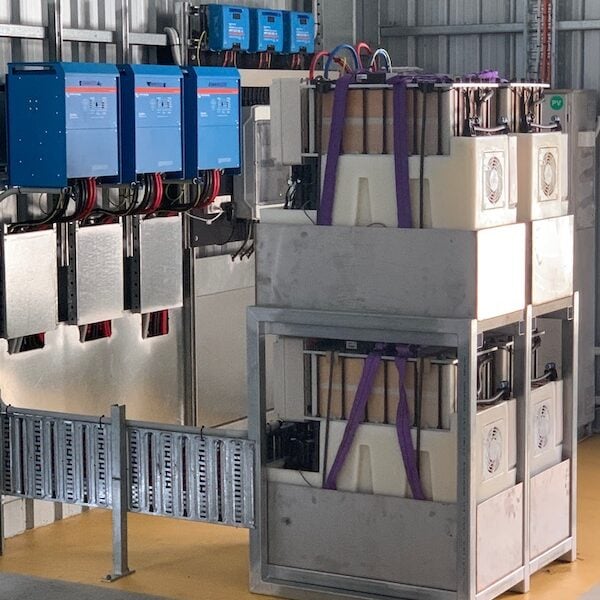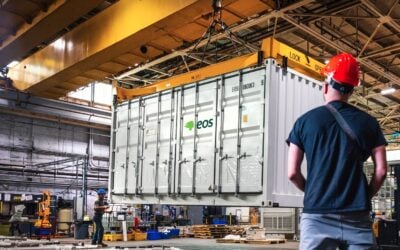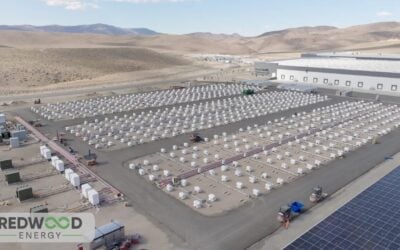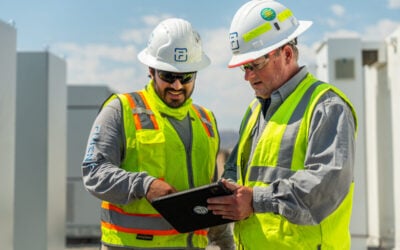
US energy efficiency and renewables company Ameresco has entered into a “strategic relationship” with Australian flow battery provider Redflow.
Redflow makes flow batteries based on a zinc-bromine electrolyte, following up deployments in markets including Australia, New Zealand and South Africa with its entry into the US, completing a 2MWh project in 2021 at a California bioenergy power plant and signing a master service agreement (MSA) with EPC services firm Black & Veatch to put Redflow on Black & Veatch’s list of approved suppliers.
Enjoy 12 months of exclusive analysis
- Regular insight and analysis of the industry’s biggest developments
- In-depth interviews with the industry’s leading figures
- Annual digital subscription to the PV Tech Power journal
- Discounts on Solar Media’s portfolio of events, in-person and virtual
Ameresco said yesterday (28 March) that through the non-exclusive deal, it plans to use the technology at project and asset installations for customers in the North American and European markets.
It will target medium to long-duration energy storage (LDES) and daily cycling applications, offering Redflow’s flow batteries as part of an integrated solar-plus-storage offering. Ameresco’s projects in the US are for federal agencies such as the military.
While Ameresco’s energy storage projects to date have been done using lithium-ion battery energy storage systems (BESS), including a 2.1GWh three-project portfolio underway for California utility Southern California Edison (SCE), the company has been evaluating flow batteries for some time.
In a February 2021 interview with Energy-Storage.news, Nicole Bulgarino, the company’s executive VP and general manager for its Federal Solutions division, said that Ameresco had been studying flow batteries for projects that require longer discharge periods, as well as for projects in remote locations.
A study the company conducted around that time with the US Department of Defence’s Environmental Security Technology Certification Program compared flow batteries with lithium-ion BESS.
At that point, after modelling but prior to field deployment and testing, the flow batteries “had potential”, but came up short versus lithium on metrics including cost performance and efficiency, Bulgarino said.
Since then, the steep decline in the cost of lithium batteries which had been experienced for around 10 years has halted due to factors including rising demand from the electric vehicle (EV) sector, while supply chain constraints have affected global deployments, including Ameresco’s projects for SCE.
Redflow and Ameresco are working on a 40kWh commercial demonstration system incorporating the zinc-bromine flow batteries to an Ameresco customer installation. The demonstrator will utilise four of Redflow’s batteries, which are in 10kWh units. Redflow launched its third generation of flow batteries in July last year.
In addition to a smaller-scale system for remote microgrids and commercial and industrial (C&I) sites, the pair are also working on a utility-scale version.
The integrated system was described as fire-safe and sustainable, made with abundant and recyclable raw materials as well as being cost-competitive with lithium-ion. Within the US market, the flow batteries will qualify for incentives under the Inflation Reduction Act (IRA) and could be manufactured domestically, earning further adders under those schemes.
While most flow battery providers are focused on vanadium redox flow battery (VRFB) tech, using vanadium solution for the electrolyte, Redflow is among a handful commercialising a different electrolyte chemistry tech. Others include ESS Inc’s iron electrolyte flow battery, while recent product launches from Lockheed Martin and Honeywell use electrolytes with as-yet undisclosed chemical compositions.
Shift to non-lithium technologies ‘happening as we speak’
Non-lithium energy storage technologies are likely to carve out a share of the market sooner rather than later, US Department of Energy (DOE) Loan Programs Office head and clean energy industry financier Jigar Shah said in a recent interview with our journal PV Tech Power (vol.34).
“The amount of innovation in the battery space is so high that it is hard to see any of the existing incumbent technologies in their current form having dominant market share in 7-10 years,” Shah said.
One industry dynamic driving change is that EV companies will continue to be the much bigger offtaker of lithium cells, effectively pricing out the BESS market, triggering “a rapid shift away from lithium-ion in the utility sector towards other chemistries, which is happening as we speak,” Shah said, echoing views Energy-Storage.news has heard from representatives of major players in the BESS space including Fluence and Wärtsilä.






